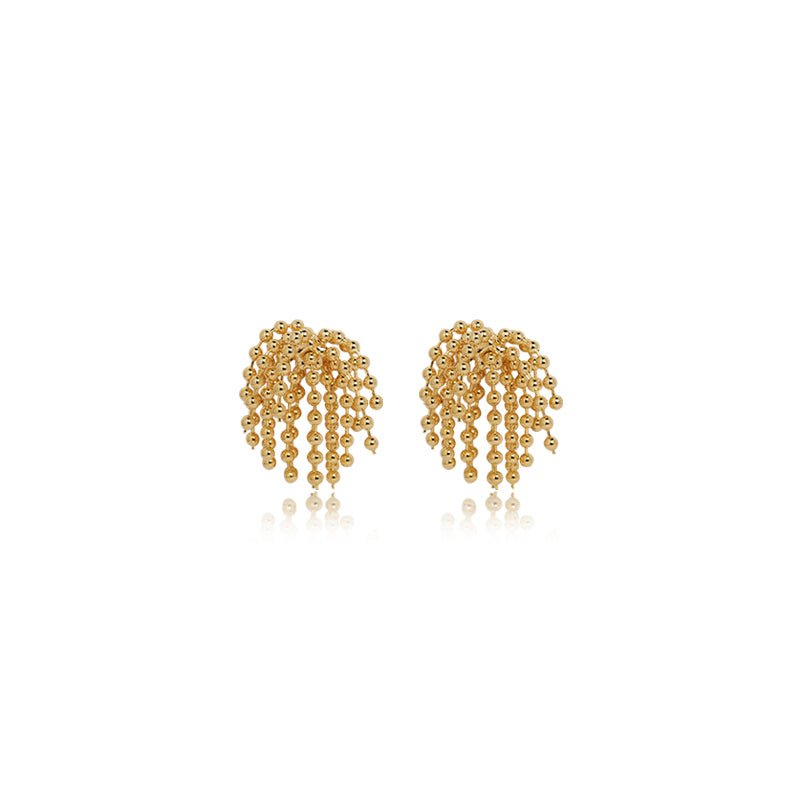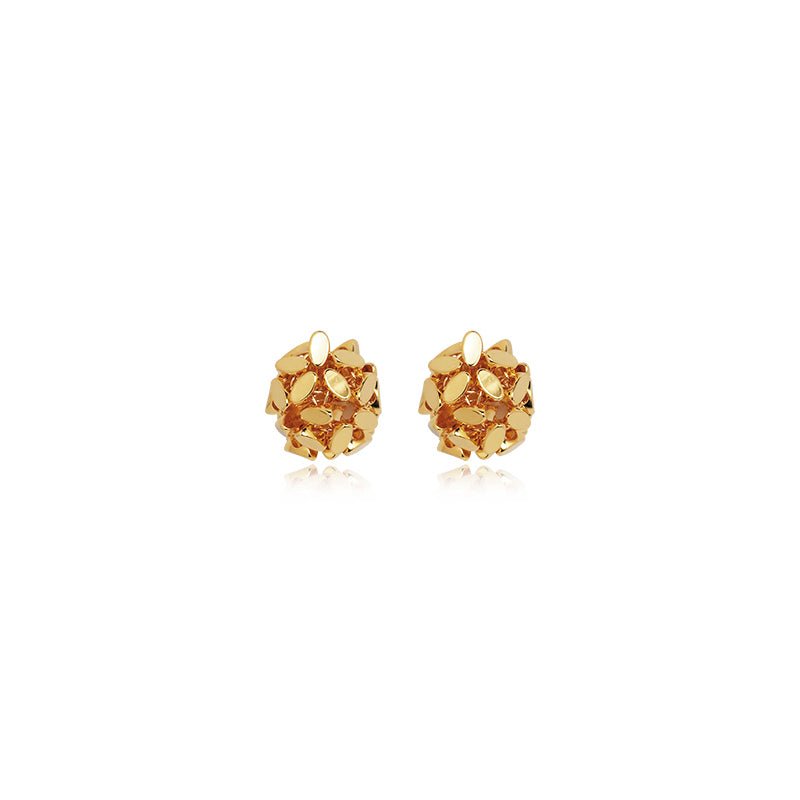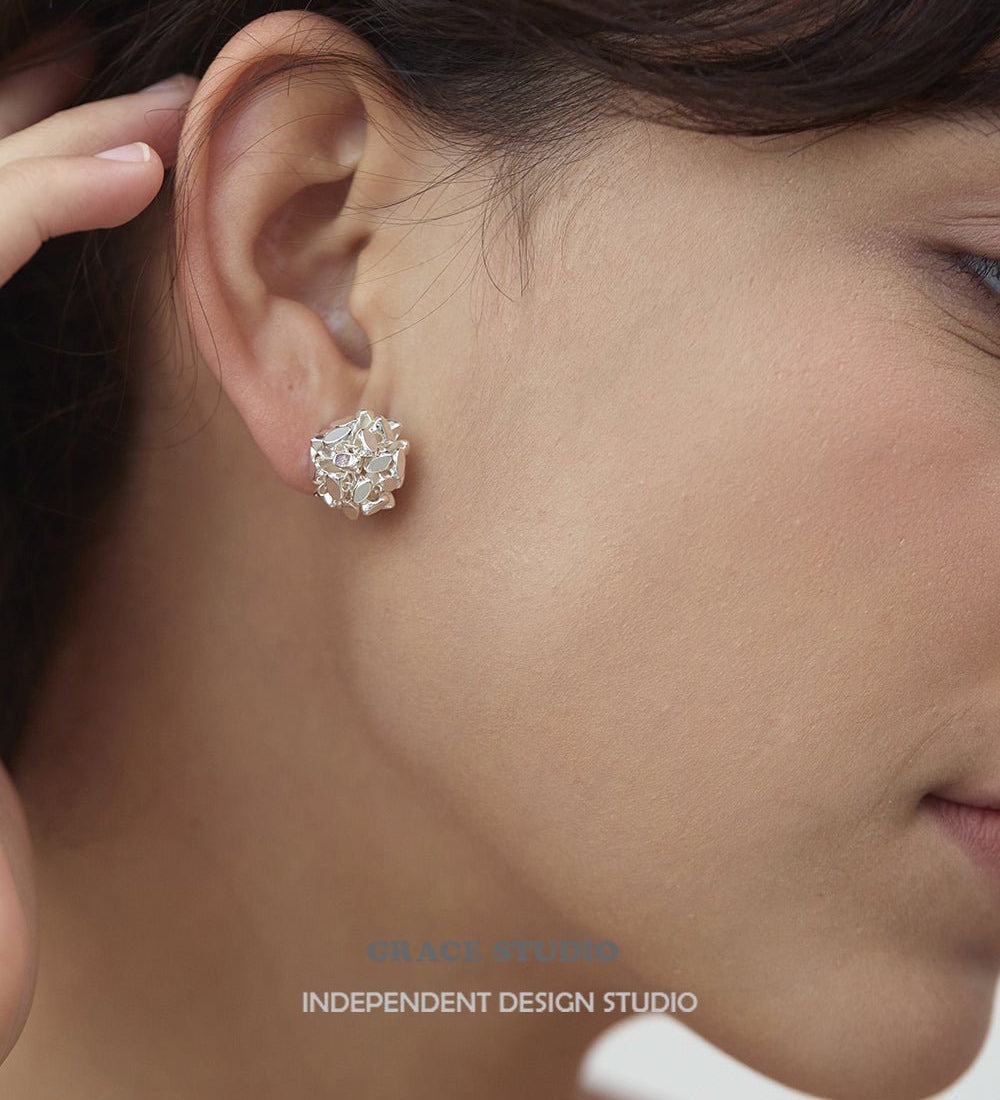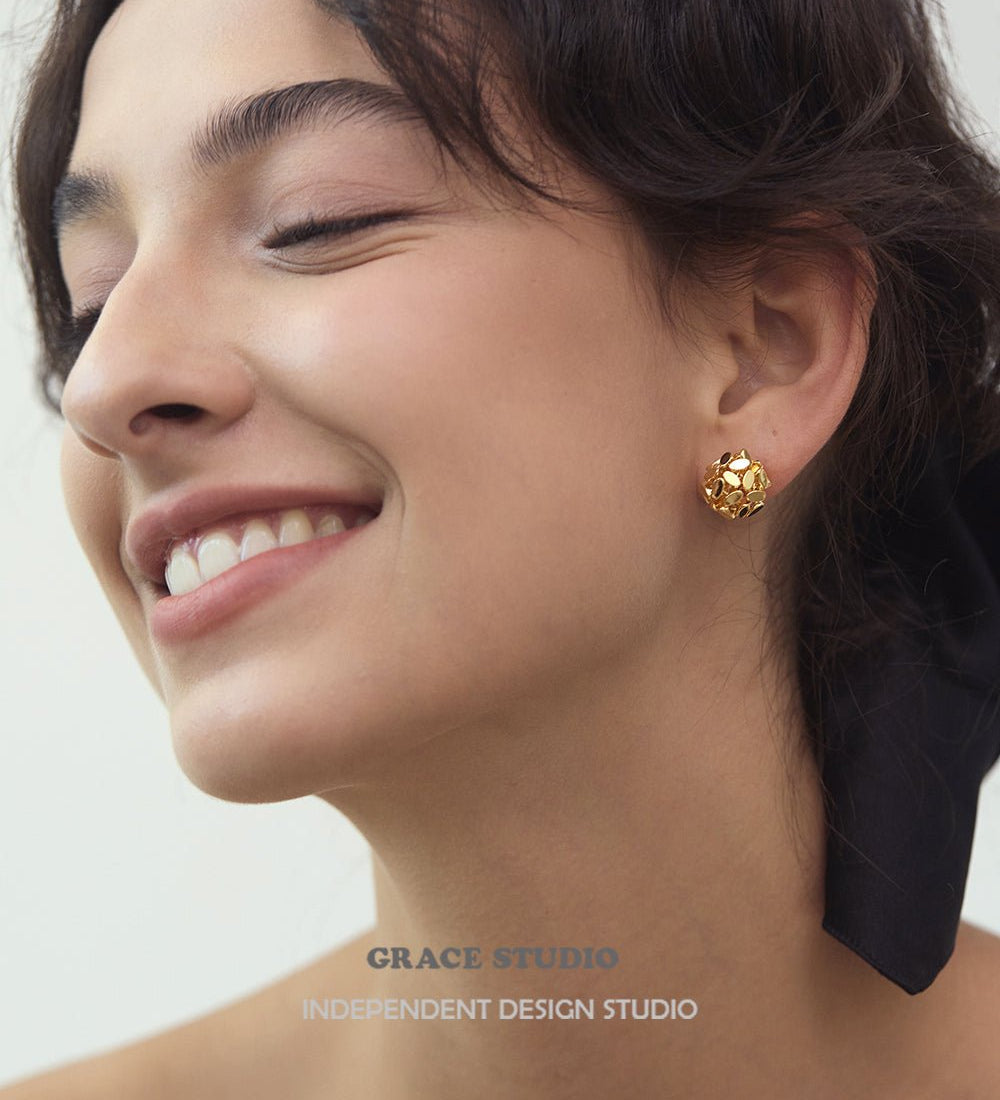How to Organize a Jewelry Box: The Complete Guide (Even If You Have a Lot)
Jewelry chaos is real. If you've ever spent ten minutes untangling a necklace or searched in vain for the second earring, you're not alone. Jewelry is one of those things that can quickly get out of hand if it's not properly stored. Pieces get tangled, tarnished, or go missing altogether.
This guide will help you take control of your jewelry collection, even if you don’t own a traditional jewelry box. Whether you have a tiny drawer or a growing collection that needs a serious overhaul, you’ll find practical strategies, creative solutions, and real-life hacks to organize everything beautifully and efficiently.
First Things First: Take Inventory and Declutter
Before you can organize anything, you need to know what you’re working with. Think of this as the jewelry version of spring cleaning.
Empty Everything Out
Start by completely emptying your current jewelry storage. Lay every piece out on a clean, soft surface, a towel, a blanket, or a microfiber cloth work well. Sort items by category: necklaces, earrings, rings, bracelets, watches, and brooches.
This is your moment to see exactly what you own. You'll likely rediscover long-lost favorites or items you forgot you had. Take a few minutes to admire the collection before moving on.
How to Declutter and Organize Jewelry
Next, evaluate each piece with a few simple questions:
-
Do I wear this?
-
Is it damaged or broken?
-
Do I have more than one of the same thing?
-
Is this sentimental, but not something I wear?
Sort everything into these piles:
-
Keep: Jewelry you wear regularly and love.
-
Repair: Items worth fixing.
-
Donate/Sell: Things in good condition but no longer your style.
-
Sentimental Storage: Pieces you want to keep for emotional reasons but don’t wear.
Be honest with yourself. If something has been sitting untouched for years and holds no real value to you, it's probably time to let it go.
Clean It All Before Putting It Back
Before you reorganize, give each piece a quick clean. Use a soft cloth or a toothbrush with mild soap and water for most metals. For delicate materials like pearls or opals, use a cleaner specific to that type.
Also, clean the storage area itself. Wipe down the inside of your jewelry box or drawer. If it has a fabric lining, use a handheld vacuum or lint roller to pick up dust and debris.
Choosing (or Replacing) Your Jewelry Box

Once your collection is trimmed and clean, it’s time to think about the best way to store it. A proper jewelry box isn’t essential, but it can definitely help. And if you don’t have one, don’t worry, we've got you covered with creative alternatives.
What Do You Line the Inside of a Jewelry Box With?
Lining is more than aesthetic, it protects your jewelry from scratches and tarnishing. Look for boxes lined with:
-
Velvet: Luxurious and protective
-
Felt: Soft and widely available
-
Anti-tarnish fabric: Ideal for silver and other metals
For DIY lining, cut pieces of soft microfiber cloth or buy peel-and-stick velvet drawer liners. These work great in drawers or repurposed containers.
Don’t Have a Jewelry Box? Here's What You Can Use Instead
Not everyone has a fancy jewelry box, and that’s perfectly fine. Here are some creative options:
-
From IKEA: Spice racks for necklaces, drawer inserts for rings and earrings, hanging pocket organizers
-
DIY Hacks:
-
Ice cube trays for rings and studs
-
Egg cartons to separate earrings
-
Pill organizers for travel or daily jewelry
-
Cork boards with pushpins for dangling earrings and necklaces
-
Try repurposing everyday items:
-
Tea boxes with dividers
-
Tackle boxes for a modular storage system
-
Stackable acrylic trays with clear lids so you can see everything
Jewelry Storage Ideas for Small Spaces
When space is tight, you have to think vertically and multifunctionally:
-
Hanging pocket organizers on the back of a closet or bathroom door work for all kinds of jewelry.
-
Stackable trays fit inside vanity drawers and can be added or rearranged as your collection grows.
-
Magnetic strips or pegboards mounted on walls or inside closets keep everything visible and tidy.
How to Organize Jewelry in a Drawer or Box

Once you have your storage setup ready, it’s time to get strategic with placement.
How to Organize a Jewelry Box in a Drawer
Drawers are great if you like to see everything at a glance. Here’s how to organize one:
-
Use trays or dividers to section off the space by type: rings, earrings, necklaces, etc.
-
Choose velvet-lined or anti-tarnish compartments to keep pieces safe.
-
If you use clear-lid trays, you can easily identify your pieces without rummaging.
-
Label sections if needed: "Everyday Wear," "Statement Pieces," "Occasion Jewelry."
-
Keep frequently worn items toward the front for easy access.
If your drawer is deep enough, go vertical. Stack trays like file folders in a cabinet. Pull them out as needed.
How to Organize Jewelry When You Have a Lot
Large collections require a bit more planning. Start by breaking things down:
-
Sort by Type: Necklaces, earrings, bracelets, rings, etc.
-
Then by Material: Gold, silver, costume, beads, leather, etc.
-
Then by Use: Everyday, special occasion, seasonal, sentimental
Use modular or tiered systems:
-
Stackable trays let you build upward.
-
Tiered stands work for earrings or necklaces.
-
Hanging organizers save space and keep things visible.
-
Small pouches or boxes can store infrequently used items and prevent tarnish.
Consider grouping items by color or aesthetic if that helps you choose accessories faster in the morning.
How to Store Each Type of Jewelry
Different types of jewelry need different storage methods to stay in good shape and avoid damage.
How to Organize Necklaces
Necklaces are notorious for tangling. To prevent this, store each one separately. Hanging necklaces on hooks or a jewelry stand is ideal. If you're storing them in a box, lay them flat with space in between. You can roll a soft cloth between each to keep chains apart. For travel or tight spaces, thread the necklace through a straw and clasp it to stop tangling, or place it in a zip pouch.
Earrings
Earrings come in all shapes and sizes, so they need a flexible storage solution. Use foam holders, mesh panels, or even punch holes in thick cardstock to keep pairs together. Keep studs and dangly earrings in separate sections. Trays with small compartments help avoid mixing and misplacing pairs.
Rings
Rings are easiest to store in slotted trays or foam ring rolls. These hold each ring upright and make it easy to browse your collection. If you're going DIY, try cutting slits into a clean sponge or rolling felt into tubes and fitting them snugly into a box. Small bowls or cups can work for everyday rings you wear often.
Bracelets, Bangles, Watches
Bracelets and bangles can be tricky because of their size and shape. Store cuffs flat or stacked gently. Bangles can go on rods or in shallow trays with room to move. Watches should be laid flat or wrapped around soft holders. If you're short on space, stackable watch cases or wrap-around rolls work great.
How to Organize Jewelry Without a Jewelry Box (DIY Ideas)

You don't need to buy a traditional jewelry box to stay organized. Here are DIY solutions for every budget and space.
How to Organize a Jewelry Box DIY
Use any shallow box or drawer. Line the bottom with felt or soft fabric to prevent scratches. Add small containers like ice cube trays, ramekins, or mini bowls to separate types. Label sections with tape or symbols to make it easy to find what you need.
How to Organize Jewelry Without a Jewelry Box
If you're starting from scratch, try making a jewelry board using mesh, lace, or cork. These can be framed and hung on a wall. Use cutlery trays or makeup organizers to sort items in drawers. Hang necklaces on a painted branch, stick, or even a towel rack with hooks.
How to Organize Jewelry DIY
Get creative with storage tools:
-
Wrap chain necklaces around cardboard strips and secure with tape.
-
Convert an old picture frame into an earring holder with mesh or fabric.
-
Use stackable plastic containers or pill organizers for travel or overflow storage.
Keeping It Organized Long-Term
Once your system is in place, a few good habits can keep your jewelry from descending into chaos again.
Create a Habit
Set a regular routine to check your collection. Once a month, untangle any chains, replace missing earring backs, and wipe down frequently worn pieces. Rotate your collection seasonally, putting away heavy winter statement pieces in summer and vice versa.
Prevent Tarnish and Damage
Store jewelry in a dry place, away from humidity. Avoid keeping it in the bathroom. Use anti-tarnish strips or store silver in airtight zip-lock bags to minimize oxidation. Keep chains separated and avoid mixing metals and materials.
Label and Segment
Especially useful when using multi-use containers or drawers. Label sections by metal type or color code them. This helps you locate pieces quickly and keeps you from buying duplicates.
FAQs
How do you organize jewelry efficiently?
Sort by type and frequency of use. Use trays, dividers, and small containers. Keep everyday items in easy reach and less-used ones in labeled compartments.
What’s the best jewelry storage for small bedrooms?
Use wall space: pegboards, hanging racks, or over-the-door organizers. Drawer inserts and stackable trays also save space while keeping things neat.
Can I store all metals together?
Not a good idea. Silver can tarnish quickly if stored with costume jewelry. Keep silver in zip-lock bags with anti-tarnish strips. Separate gold and costume items to avoid chemical reactions.
How do I store heirloom or delicate pieces?
Use soft cloth pouches or individual compartments. Avoid stacking or contact with other items. Keep in a dark, dry place away from heat and moisture.
Conclusion
Organizing your jewelry is more than just tidying up, it protects your investment, saves time, and helps you get more wear out of your collection. Whether you use a traditional jewelry box, a DIY setup, or creative wall-mounted solutions, the key is finding a system that works for your space and habits. Clean it, sort it, label it, and keep up with maintenance. Your jewelry deserves a good home, and so do you.





























Leave a comment